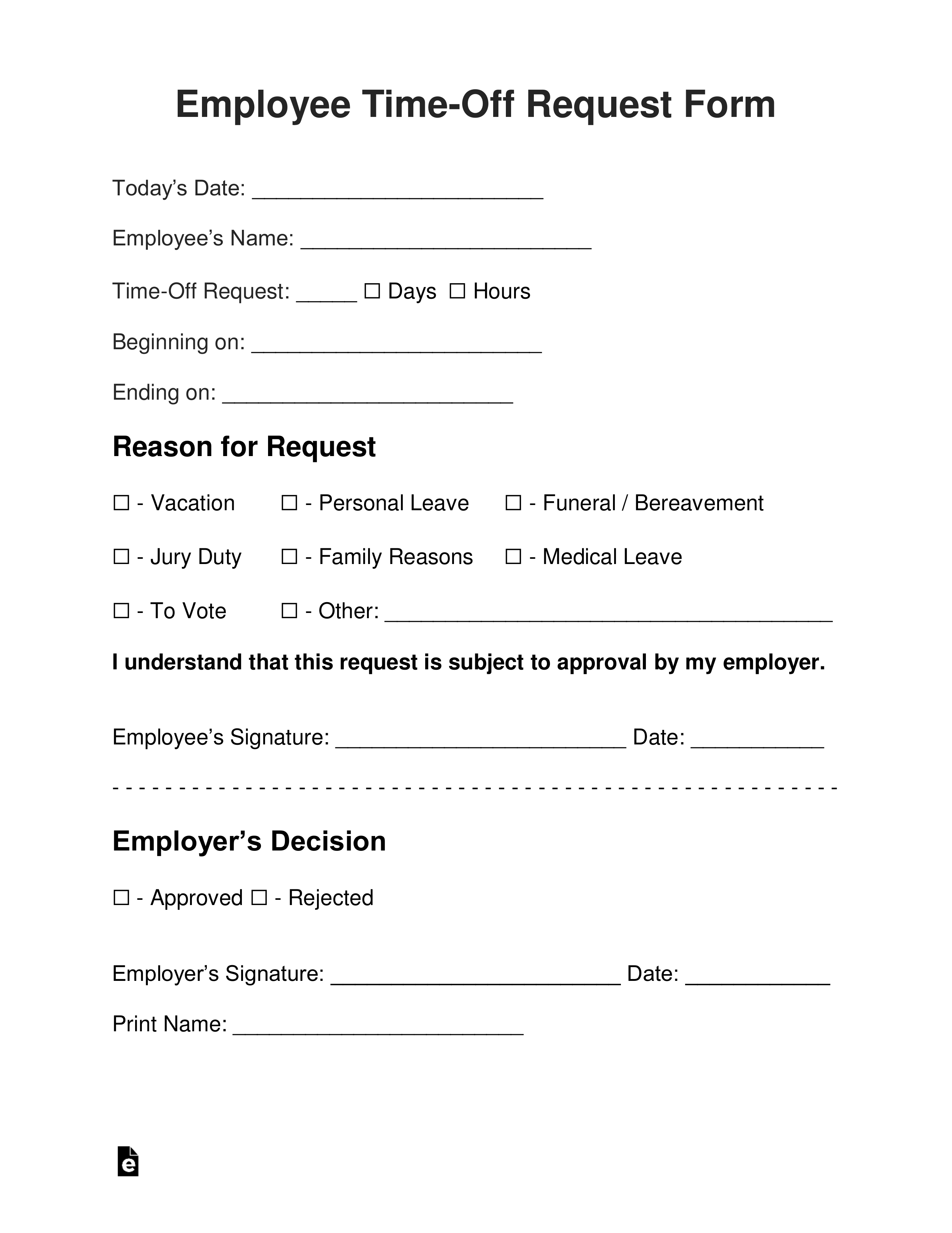Using pre-designed forms for absence notifications offers several advantages. They reduce the likelihood of errors or omissions in requests, simplify the approval process for managers, and contribute to better record-keeping for attendance tracking and payroll purposes. This efficiency saves time and resources for all parties involved and promotes a more organized approach to leave management.

This article will delve into the various types of these forms, best practices for their creation and implementation, and examples showcasing effective design and content.
Key Components of a Leave Request Form
Effective leave request forms facilitate clear communication and efficient processing. Several key components ensure these forms serve their purpose effectively.
1. Employee Information: This section should include the employee’s full name, employee ID, department, and job title. Accurate employee identification is crucial for proper record-keeping.
2. Date of Request: The date the request is submitted allows for tracking and processing timelines.
3. Leave Period: Start and end dates of the requested leave, including specific times if necessary (e.g., half-day requests), are essential for scheduling and workload management.
4. Type of Leave: Specifying the type of leave (vacation, sick leave, bereavement, etc.) allows for accurate categorization and adherence to company policies regarding each leave type.
5. Reason for Leave (Optional): While not always mandatory, providing a brief reason for the leave can be helpful for context, especially for longer absences or specific leave types.
6. Contact Information: Providing a phone number or email address where the employee can be reached during their leave is important for emergencies or urgent matters.
7. Supervisor Approval: A designated space for supervisor signature or electronic approval ensures proper authorization and accountability.
8. HR Acknowledgment: A designated space for HR or administration to note and to formally accept that this has been received and processed for payroll and other relevant administrative purposes.
Complete and accurate information in these fields ensures smooth processing, facilitates effective communication between employees and their supervisors, and contributes to accurate record-keeping.
How to Create a Leave Request Template
Creating a standardized leave request template ensures clarity and consistency in absence management. A well-designed template streamlines the request process for both employees and supervisors.
1. Determine Required Information: Identify essential data points for the organization, such as employee details, leave dates, type of leave, and contact information. Consider legal and company-specific requirements.
2. Choose a Format: Select a formatdigital or paper-basedthat aligns with existing workflows. Digital forms offer automated routing and storage advantages.
3. Design the Layout: Structure the template with clear headings and logical sections. Ensure the form is easy to read and complete. Use a clear font and sufficient spacing.
4. Incorporate Approval Workflow: Designate space for supervisor approval and any other necessary authorization steps. If using a digital format, integrate the template with existing approval systems.
5. Test and Refine: Pilot the template with a small group to identify any areas for improvement. Gather feedback on clarity, usability, and completeness.
6. Implement and Communicate: Roll out the template organization-wide. Provide clear instructions to employees and supervisors on how to use the new form.
7. Regularly Review and Update: Periodically review the template to ensure it remains aligned with evolving business needs and regulatory requirements. Update as necessary.
A thoughtfully designed template promotes efficient leave management processes, reduces errors, and supports accurate record-keeping. Consistent implementation contributes to a streamlined and transparent system for handling employee absences.
Standardized forms for requesting time off work are essential for efficient absence management. These forms ensure clear communication, streamline approval processes, and support accurate record-keeping. Key components include employee details, dates of leave, type of leave, and contact information. Proper design and implementation contribute to a transparent and organized system, benefiting both employees and employers. Digital formats offer further advantages through automated routing and storage, enhancing overall workflow efficiency.
Effective leave management requires a systematic approach. Organizations should prioritize the development and implementation of well-designed templates for leave requests. By promoting consistency and clarity, these tools contribute to a smoother, more efficient process for managing employee absences, ultimately supporting operational effectiveness and employee satisfaction. Regular review and adaptation of these templates ensures they remain aligned with evolving organizational needs and regulatory requirements.